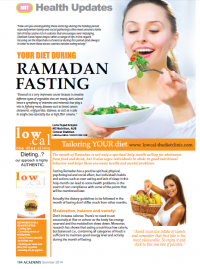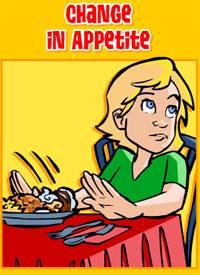Will going gluten free Help you lose weight?
PDF :
Will going gluten free help you lose weight?
Nowadays, news about the harms of gluten and the importance of adopting a gluten free diet has been rising massively. Like most people, you've probably heard about the gluten-free phenomenon but you don't really understand what gluten is or whether you should be doing something about it in your diet. Yet, millions of people are turning their lives upside-down trying to avoid gluten.
Several studies have been examining the effect of gluten on weight. Researchers now know that gluten is the cause behind the frustrating question that haunts many unsuccessful dieters: “I am on a healthy, balanced diet and I work out, but why am I not losing weight?” Whether the problem is intolerance to gluten or celiac disease, evidence has shown that gluten has an effect on weight. How does gluten affect weight?
Gliadin, a component of gluten, has been shown to over stimulate the appetite to a level where you can eat up to 500 calories more each day. Gluten has a drug like effect on your brain, causing cravings and thus making you eat more and more food.
Definitely a gluten-free diet is critically important for individuals with celiac disease — an inherited autoimmune condition. For these patients, gluten can severely damage their intestines if it is not strictly avoided. Beyond those with celiac disease, there are people who suffer from gluten sensitivity. Where is gluten found?
Gluten is found in wheat, rye, barley and oat products, in the form of pasta, cakes, cookies, bread, and cereal. Wheat can appear on food labels in various words, including: flour, bread flour, wheat flour, white flour, whole wheat flour, pasta, bulgur, spelt, semolina, and kamut. These words on a food label indicate that the food contains gluten. Rye appears only in rye bread and in some forms of alcohol. Barley appears less frequently in food products such as in beer and malt.
Hidden sources of gluten can be found in certain brands of chocolate, imitation crab, deli meats, soy sauce, broth in soups and bouillon cubes, salad dressings, bread crumbs, croutons, some candies, and fried foods.
However, celiac and gluten sensitivity are not the driving force behind the rise of gluten-free foods. These foods are being highly consumed by people who want to lose weight. In fact, there’s nothing inherent about a gluten-free diet that will enhance weight loss, unless it helps you avoid junk food and eat more fruits, vegetables, and whole grains that are naturally gluten-free. However, going on gluten free diet for losing weight can sometimes fail if it is not carefully planned.
Gluten-free doesn't mean low in fat or low in calories. Individuals can actually gain weight on a gluten-free diet, especially if they’re consuming a lot of highly refined gluten-free products. Many gluten-free items often have more carbohydrates and a lot of added sugar and fat compared to gluten-containing items. This is because when you take out the gluten, the product would need the extra sugar or fat to get the right taste and texture. In order to avoid this pitfall, choose naturally gluten-free foods, including fresh fruits and vegetables, lean protein such as meats, fish and poultry, whole grains like brown rice and quinoa, fat-free dairy, nuts and seeds, legumes, and healthy fats.
Going gluten-free side effects:
1. Your
diet might not provide you with a good amount of fiber
Whole grain carbohydrate products are rich in fiber. So when you give up gluten, you're left with few options from whole grain products to choose from. Unfortunately, many gluten-free bread and other baked products contain few fiber. This is why, consuming enough fiber on a gluten free diet presents as a challenge to many dieters. Little fiber in your diet leads to constipation.
Solution? Try to get fiber from other sources. For example, look for whole-grain gluten-free bread, add more beans and legumes, fresh fruits and vegetables, and nuts and seeds.
2. You Should Watch Your Vitamin Intake
A gluten free diet doesn’t provide enough of iron and B vitamins. Therefore, pay attention to your intake of thiamin, riboflavin, niacin and folic acid (all B vitamins), along with your iron intake, to make sure you're getting the recommended daily allowances of these vitamins. Load up on fresh fruits and vegetables or consider taking a supplement to make up for any nutritional deficiencies that may occur as a side effect of the gluten-free diet.
Bottom line: Should You Go Gluten-Free?
If you have celiac disease or gluten sensitivity, the answer is yes, you have to. But if you just want to give the diet a try as to losing weight, you should be aware of the nutritional deficiencies and the side effects mentioned above. This is where careful meal planning comes into play. If you focus on fruits, vegetables, lean protein, dairy, and gluten free grains like quinoa, this would be a healthy lifestyle you can adopt. However, you need to know that gluten is not something to fear. Excluding celiac disease comes first. If you don’t suffer from celiac disease, you probably don’t need to completely avoid gluten. The best weight loss strategy is not by removing gluten. It is by decreasing your carbohydrate intake in the amount allowed and by choosing carbohydrates of low glycemic index (GI).
Unfortunately, many gluten-free products have a high GI due to processing and the lack of whole grains. “The glycemic index is a list of how blood sugar levels rise after you eat a small portion of a carbohydrate food”. On the glycemic index scale, each food is given a number from 1-100, with 100 being the reference score for glucose. Foods are rated high (greater than 70), moderate (56-69), or low (less than 55). Refer to tables 1, 2 and 3 for the glycemic index of the food. (Zelman, Kathleen M. "The Glycemic Index Diet Review (Low Glycemic Diet), Low Glycemic Foods, and More." WebMD).
Table 1 - Low GI Foods
|
Food
|
GI
|
|
Roasted and salted peanuts
|
14
|
|
Low-fat yoghurt with sweetener
|
14
|
|
Cherries
|
22
|
|
Grapefruit
|
25
|
|
Red lentils
|
26
|
|
Whole milk
|
27
|
|
Dried apricots
|
31
|
|
Skimmed milk
|
32
|
|
Low-fat fruit yoghurt
|
33
|
|
Apples
|
38
|
|
Pears
|
38
|
|
Apple juice, unsweetened
|
40
|
|
Noodles
|
40
|
|
White spaghetti
|
41
|
|
All Bran
|
42
|
|
Chick peas, canned
|
42
|
|
Peaches
|
42
|
|
Lentil soup
|
44
|
|
Oranges
|
44
|
|
Macaroni
|
45
|
|
Green grapes
|
46
|
|
Orange juice
|
46
|
|
Peas
|
48
|
|
Carrots, boiled
|
49
|
|
Kiwi fruit
|
52
|
|
Special K
|
54
|
|
Banana
|
55
|
|
Sweet corn
|
55
|
Medium Glycemic Index foods (56 to 69)
Table 2 - Moderate GI Foods
|
Muesli, non toasted
|
56
|
|
Boiled potatoes
|
56
|
|
Pita bread
|
57
|
|
Basmati Rice
|
58
|
|
Honey
|
58
|
|
Digestive biscuit
|
59
|
|
Cheese and tomato pizza
|
60
|
|
Ice cream
|
61
|
|
Coca cola
|
63
|
|
Apricots, canned in syrup
|
64
|
|
Raisins
|
64
|
|
Couscous
|
65
|
|
Rye bread
|
65
|
|
Pineapple, fresh
|
66
|
|
Cantaloupe melon
|
67
|
|
Croissant
|
67
|
High Glycemic Index foods (70 or more)
Table 3 - High GI Foods
|
Mashed potato
|
70
|
|
White bread
|
70
|
|
Watermelon
|
72
|
|
Bagel
|
72
|
|
French fries
|
75
|
|
Rice cakes
|
82
|
|
Baguette
|
95
|
|
White rice, steamed
|
98
|
What is the theory behind choosing low-moderate GI food items?
Evidence shows that low GI carbohydrates are more satiating than high GI carbohydrates. This is due to the fact that low GI carbohydrates take longer to digest and help you feel full by slowly releasing sugar into the blood. This slow release in sugar provides you with a stable supply of energy, leaving you feeling satisfied longer and thus less likely to snack. High GI carbohydrates, on the other hand, are digested faster, causing a rapid increase in blood sugar, leaving you hungry and less satisfied. If this pattern is regularly recurring, you're likely to gain weight as a result of constantly snacking and overeating. Moreover, most low GI foods tend to be healthier, more nutritious, less processed, and rich in fiber. When you focus on choosing low-GI carbohydrates in the allowed amounts along with lean protein and healthy fats, you will be omitting many of the less nutritious, high GI foods and lose weight.
The challenge with GI diets is that the GI scale only identifies the effect of each food eaten on its own and does not provide you with the GI value of a meal. Consequently, when you eat a meal, the GI value of that whole meal is hard to be determined. As a principle though, the more low GI foods you eat, the lower the overall GI value of that meal will be.
In conclusion, in order to lose weight, you must reduce the calories you consume and increase the calories you burn. Reduce your caloric intake by limiting intake of fat. Choose mono unsaturated fat such as vegetable oil, olives, avocado, and nuts. Still limit quantity due to a concentrated form of energy. Emphasize on healthy proteins, fiber, legumes, and complex carbohydrates and control your portion size, as well as fat content and cooking methods. Last, water and exercise are the key words to a successful long term weight loss regimen. The right diet for you is the diet you can stick with forever because there is no reward in going on a diet for a short period of time if you can’t maintain it. Keep this in mind, it’s not just about dieting, rather it’s your way of living.
















